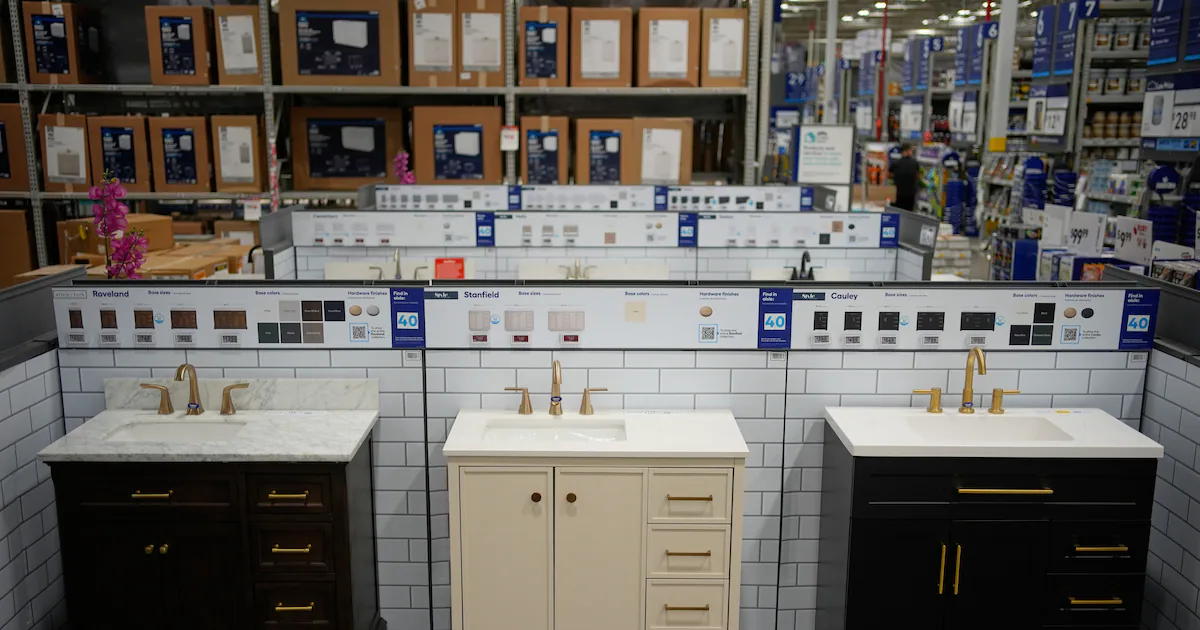
President Donald Trump’s sector-specific tariffs threaten to add fresh fuel to inflation that has remained stubbornly elevated for four years, potentially driving up costs for households at least in the short term.
The new tariffs range from 25 percent to 100 percent and target pharmaceuticals, heavy trucks, kitchen cabinets, bathroom vanities and upholstered furniture. They will take effect Oct. 1.
It’s already a challenging period for consumers. Fresh data from the Commerce Department on Friday showed core inflation – the Federal Reserve’s preferred gauge of underlying price pressures – grew at a 2.9 percent annual rate in August. That was in line with expectations but up from a 2.5 percent rate in April.
“At a time when it’s looking increasingly like the U.S. is experiencing an acceleration in underlying inflation, the new tariffs announced by President Trump will only exacerbate the challenges facing households and will only make it harder for the Fed to continue cutting interest rates, as the president wishes,” said Michael Strain, director of economic policy studies at the right-leaning American Enterprise Institute.
The sectoral approach represents a shift in Trump’s trade strategy, with the president citing national security concerns and what he described as unfair outside competition to justify the duties. Using his Truth Social platform to announce the measures, Trump said these actions would defend American producers against a “large scale ‘FLOODING’” of foreign products.
As a key element of the Trump administration’s economic policy, these sector-specific tariffs have the added benefit of sidestepping the looming Supreme Court case scheduled for the first week of November that challenges Trump’s broader countrywide tariffs imposed under the International Emergency Economic Powers Act. Lower courts have ruled that Trump exceeded his authority under IEEPA for those sweeping duties, but the new sectoral tariffs are being implemented under so-called Section 232 authority, which focuses on national security implications.
Indeed, the Trump administration has signaled that more sector-specific tariffs are likely in the months ahead. The Commerce Department has already launched investigations into personal protective equipment, medical devices, robotics and industrial machinery imports – potential precursors to additional duties.
The Trump administration has imposed widespread tariffs this year, targeting goods from nearly every country. Trump has also added tariffs on common materials, including steel, copper and aluminum. The levies on America’s top trading partners range from 10 percent to 50 percent, and consumers are feeling the effects: Americans are paying more for appliances, toys and shoes than they were at the beginning of the year, and economists expect to see more price increases as tariff rates hit businesses.
“The Administration is working with the private sector to implement a nuanced, multifaceted approach to restoring manufacturing that’s critical to our national and economic security,” White House spokesman Kush Desai said in a statement.
Several furniture store stock prices dipped after Trump’s announcement Thursday night, including Williams Sonoma and RH, which operates Restoration Hardware. Williams Sonoma’s shares closed in positive territory on Friday, while RH’s declined by about 4 percent for the day.
In a letter to shareholders earlier this month, RH chairman and CEO Gary Friedman addressed the ongoing furniture tariff investigation, noting that “manufacturing for high quality wood or metal furniture does not exist at scale in America.”
The company has been shifting its sourcing out of China, and expects about half of its upholstered furniture will be produced in the U.S. by early next year.
This latest round of tariffs threaten to complicate the Federal Reserve’s monetary policy calculus as officials attempt to balance supporting a softening labor market against persistent inflation concerns. The central bank cut its benchmark rate by a quarter point earlier this month to a range of 4.0 to 4.25 percent, its first reduction of 2025, after holding rates steady all year. While companies have been passing higher tariff costs on to consumers, the effect on inflation has been muted so far, Fed Chair Jerome H. Powell told reporters.
Still, Fed officials have urged caution about the pace of future rate cuts. Chicago Fed President Austan Goolsbee told reporters Thursday, ahead of the tariffs announcement, that the Fed must be convinced that inflation is merely “transitory” – a word that “should make you uneasy” because it harks back to 2021 and 2022, he said, when inflation “proved far more persistent than folks were predicting at that time.”
The cautious stance extends to Powell, who has said the central bank faces no risk-free path forward. “If we ease too aggressively, we could leave the inflation job unfinished and need to reverse course later to fully restore 2 percent inflation,” he said Tuesday. “If we maintain restrictive policy too long, the labor market could soften unnecessarily.”
Powell added that the Fed’s interest-rate policy remains “modestly restrictive” despite the Sept. 17 cut, leaving room for further easing if labor-market softness persists.
The immediate impact of Thursday’s tariffs could be significant. The 100 percent tariff on pharmaceutical products could effectively double import costs for some branded drugs, potentially leading to higher prescription prices for Americans. Kitchen cabinets face a 50 percent tariff, upholstered furniture a 30 percent duty, and heavy trucks a 25 percent rate.
The upshot is that the effective tariff rate faced by American businesses and consumers – all tariff revenue divided by the value of goods subject to tariffs – started the year at about 2 percent but has now climbed to roughly 10 percent – and is still rising, according to Mark Zandi, chief economist at Moody’s Analytics.
“Who knows what will be implemented and when, but the direction of travel is clear,” he said.
Trump has offered exemptions for pharmaceutical companies actively building manufacturing plants in the United States, defining “building” as projects that are “breaking ground” or “under construction.” However, the timeline for such projects remains uncertain, meaning consumers could face higher drug costs in the near term.
Policymakers now face the delicate task of supporting employment while preventing inflation from becoming further entrenched above target levels that have persisted since early 2021. The Fed’s preferred inflation measure has exceeded the 2 percent target for 4½ consecutive years, making officials particularly wary of policy moves that could reignite price pressures.



